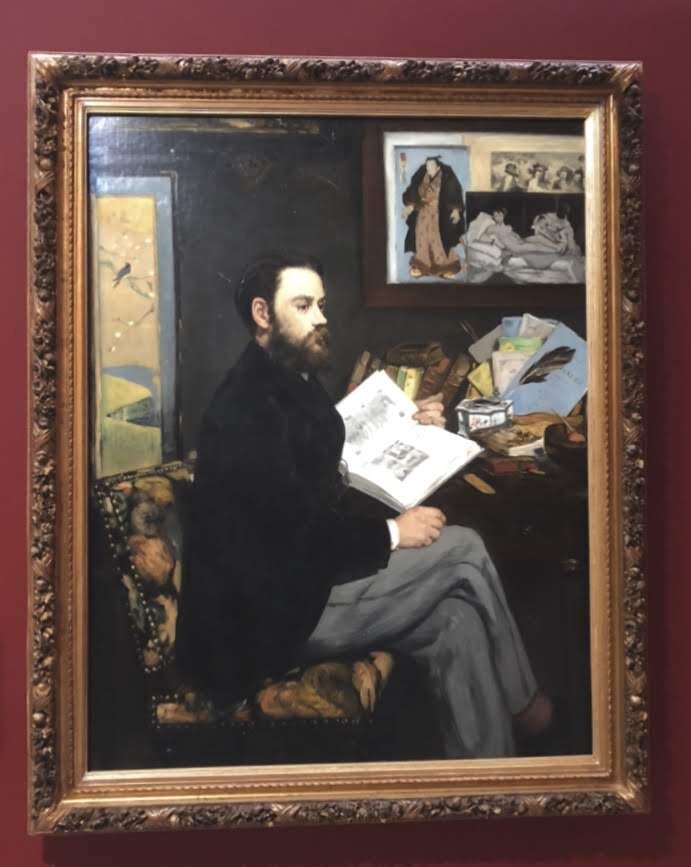The top floor of the Musée d’Orsay is filled with the Impressionists that shook up the Paris art world. Manet, Monet, Morisot, and Renoir cover the walls along with the man who never wanted to be lumped into the movement. Degas did however join them in creating their exhibitions in 1874 after the Salon would not let them in.
From 1874-1886 the Anonymous Society of Painters, Sculptors, and Engravers would display their work in the studio of Nadar on the Blvd des Capucines. Preferring to be called a Realist, Degas ridiculed the en Plein air practice that was taking over and the basis of Impressionism. He preferred to worship at the feet of Delacroix and Ingres and spend time at the Opera capturing the musicians and dancers.
While Orsay holds many of his horse racing and ballet paintings, it’s one of a slightly darker subject that is my favorite. However, once you know the story, it is not that sad at all. In 1875 Edgar Degas painted Dans un Café, later titled L’Absinthe. In the painting of two people sitting in a café, the woman looks depressed and defeated with a glass of absinthe in front of her.
The man smokes his pipe and appears to be watching something off the canvas. I once heard someone describe a young woman as a prostitute, fashionably dressed down to her feet sitting with her date and a vacant look on her face. The truth is that Degas couldn’t find any people that looked depressed enough for his painting so he asked two friends to pose for him in the Café de la Nouvelle-Athènes. An actress that also posed for Manet, Ellen Andrée portrays the sad woman and painter Marcellon Desboutin as her companion. When the finished painting was shown in 1876, it was not received well.
One critic even said of the woman in the painting, “What a whore!” The painting was described by some as a cautionary tale of what will happen if you head down the road of the green fairy. The painting would end up in the collection of Isaac de Camondo until he donated it in 1911 to the Musée du Louvre where in 1986 would move to the Orsay. Happy 188th birthday, Monsieur Degas.
























